This review originally appeared on bythom.com in September 2009. It has been updated and reformatted several times since then, including the most recent changes for the dslrbodies.com site.

What is It?
Surprisingly, we waiting a long time for a basic prime lens with AF-S: almost ten years into the DSLR era. The 50mm f/1.8D was the last of the 50's introduced prior to our review lens, and that was back in 2002. Adding "D" (distance reporting) to a prime is a lot easier than adding AF-S, but neither should have been a particularly tough issue for Nikon's optical team. Thus, one has to conclude that there wasn't a lot of priority to introduce a new 50mm prime quickly. Frankly, if so, I think that was wrong.
Let me explain why a fast 50mm prime is still important in these days of zooms: for DX cameras, somewhere in the 50 to 60mm range is a perfect portrait focal length, and you generally want a fast lens to help provide control over depth of field (often you want to isolate a person you're taking a picture of from the background). An f/2.8 lens, or worse, a f/3.5-5.6 zoom, doesn't give as much flexibility at subject isolation. The older 50mm lenses use screw-drive autofocus systems that don't work on Nikon's lower-end models (D40, D40x, D60, and the D3xxx and D5xxx models).
Moreover, the aging 50mm f/1.4D wasn't what I'd call a stellar performer wide open, especially on the FX bodies in the corners. So Nikon had a significant hole in their lens lineup for some time. The 50mm f/1.4G AF-S plugged that hole.

50mm f/1.8D on left, 50mm f/1.8G in middle, 50mm f/1.4G on right
If you haven't used a mid-range prime for awhile, the first thing you notice is the lack of bulk and weight. At about 2" long and 3" in diameter and weighing in at about 10 ounces, this is a lens that is on the small side. Not as small at the 50mm f/1.8D, but still what I'd consider small.
The full, non-petal hood extends the look of the lens another ~1.5" inches, but that doesn't really change things for me. Small is small. Indeed, on any DX body the 50mm f/1.4G AF-S makes for a nice compact, light setup—the lens feels really well balanced on small, light cameras.
On a big D5-type of body, the lens almost disappears. I kept finding that I wanted to reach further forward than the lens extended in order to grab the focus ring. Nevertheless, you'll adjust. My point is that 10 ounces and a couple of inches just doesn't feel like it adds to the bulk and weight of the big pro bodies; it almost feels like you're shooting without a lens.
The 50mm focal length provides 40° of horizontal angle of view on FX, 27° on DX. That 27° is pretty close to the 24° of the classic 85mm f/1.4D used on a film (or FX) body for portraits, thus my point about this being a good portrait length for DX. Nikon themselves picked up on that and mention it in their marketing early on. Just don't get confused and think that 50mm is "normal" on a DX body. It's not. It's a mild telephoto lens on DX.
Of course, FX body users will find that 50mm is normal. The full frame Nikon DSLRs have such good higher ISO abilities that I'm not sure you truly need an f/1.4 50mm any more for low light shooting, but dedicated night shooters will probably be happy with the fast aperture.
I mentioned depth of field isolation, so let's put that into perspective. On a DX camera taking a portrait at 10 feet you have about a half foot of depth of field at f/1.4, slightly over a foot at f/2.8. At 20 feet it's about two feet versus four feet. Put another way, you can cut depth of field in about half with the extra maximum aperture range at normal shooting distances, should you so desire. Personally, I find that level of extreme isolation a bit much, but there are most certainly photographers that value it.
Focus on this lens ranges from 18 inches (0.45m) to infinity. The focus ring is moderate in size and easy enough to find at the front of the lens (assuming you don't reach too far on those big bodies ;~). Near-to-far focus takes over a half turn of the ring, providing a good degree of precision in focus placement that we don't see in the zoom lenses, or the f/1.8 Nikkors, for that matter.
The lens has a distance scale with DOF markings for f/11 and f/16 for FX bodies (and at a looser standard than I'd use). On the left side (as you hold the camera) is one switch the controls focus (A/M for autofocus with manual override, M for manual focus only). The lens does not have VR or an aperture ring (this last limits the number of older film SLRs that the lens can be used on).
The HB-47 hood is the bayonet type and can reverse mount on the lens. The hood is a full hood, not a petal design. The pinch-front lens cap can be mounted on and taken off the lens with the hood on, though finding the centering placement to put it back on is a little touchy. The lens uses 58mm filters, which is not a common filter size for Nikon.
The lens is made in China. Optical design is 8 elements in 7 groups, with no special glass. Current price on the lens as this review was updated is US$450, and it is sometimes offered at discount from that. Lens comes with the hood and CL-1013 soft pouch.
Source of the reviewed lens: purchased
How's it Handle?
With a lens this simple, handling isn't exactly a deep subject.
The focus ring is the usual AF-S kind: a sort of plastic on plastic feel while turning, though not unsmooth and free from snags and stiffness. It's not the super smooth focus ring you remember from the manual focus Nikkors (or the current Zeiss 50mm), but I find it more than acceptable.
As I noted earlier, the 50mm f/1.4G AF-S is small and light and balances on the front of most Nikon consumer DSLRs very nicely. On bigger pro cameras, such as the D5 body, it just disappears. But either way, the size and weight of this lens is not a factor.
How's it Perform?
What do you expect from a very fast prime? Well, lots of light, but historically, poor wide open performance.
Autofocus: The AF-S on this lens is slower than many other AF-S lenses. That's not to say that it's "slow," just slower than you might expect. This doesn't really become an issue unless you're going from one focus extreme to another (i.e. closest focus to infinity) or need to follow fast action. I tried using the lens to shoot basketball from the end line, and my hit rate was decidedly down from what I normally expect with an AF-S lens. Nikon appears to have made a tradeoff here: lots of focus ring rotation and manual focus precision for somewhat slower autofocus speeds. I'm not sure why they made such a decision, but those expecting the addition of AF-S to make for warp speed focus compared to the older D lens are going to be disappointed. On the other hand, there was little or no hunting, and very precise and predictable focus on my sample.
Sharpness: Tthe 50mm f/1.4G AF-S doesn't knock this test out of the park, but it does well. The older f/1.4D was notoriously soft, especially into the corners wide open, and the new version is better, but still far from perfect. Even on DX cameras the corners were visibly softer at f/1.4 and the center wasn't pushing what even the D300 could resolve. I had to stop down to f/5.6 to get the best possible results from both center and corner, and at that level, the lens is certainly delivering pretty much everything you'd expect, even with current DX bodies.
On FX bodies the same thing applies. I'd say corners are poor to fair at f/1.4 on the D3x and D750, but then, what exactly are we expecting here? A modest priced lens with these specs isn't going to have exceptional corner performance wide open. Again, you'll need to stop down three or four stops to get to best performance on FX. Even then, performance never really reaches "great" on my D3x, and certainly doesn't on my D850. If you're looking for best possible 50mm performance for a D3x, I'd tend to suggest the Zeiss manual focus lens, the Sigma Art, or maybe the Tamron 45mm.
Don't get me wrong, optical performance is good, just not knock-your-socks-off great on the 24mp and higher full frame DSLRs. But again, what are you expecting putting a US$450 lens on a US$3000+ body? As my ratings try to suggest: you get what you pay for.
Here's what I got directly out of my D3x (FX body) mostly set to defaults (test target is in center here, then moved to extreme corners for the corner tests).
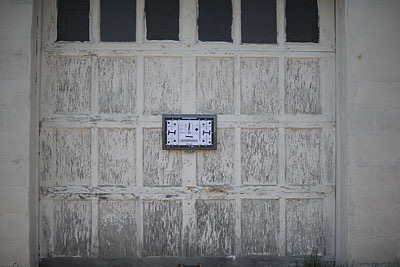
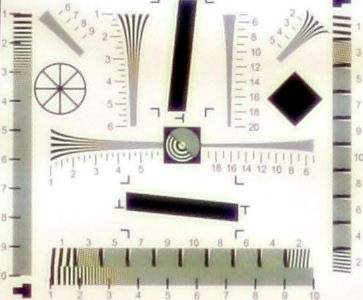
Center f/1.4
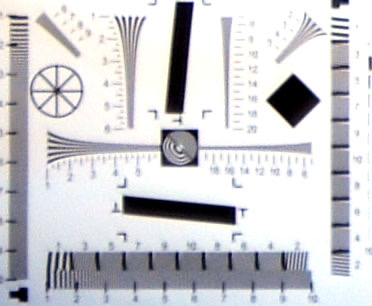
Corner f/1.4
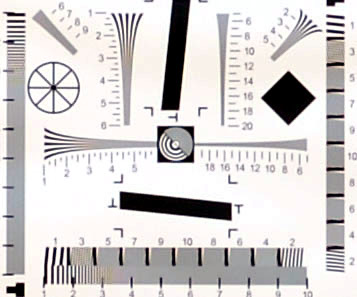
Center f/5.6
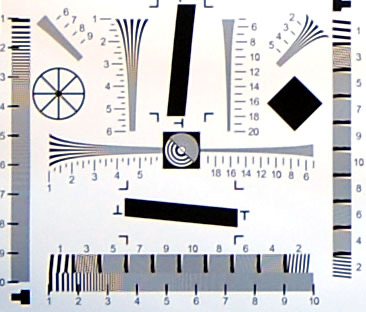
Corner f/5.6
Note: I place this chart where moire will clearly be triggered (e.g. past the Nyquist frequency for many of the lines). It may look a little fuzzy to you in these samples, but that's an impact of distance as much as anything else. It doesn't help that my site's image resizing engine will add artifacts, one reason why I don't always show such samples.
If you're noticing that the corner samples seem slightly better than the center samples at f/5.6, you have good eyes. I've played a slight trick on you here: the center samples I'm showing here are focused with the normal AF system while the corner samples are focused using LiveView contrast mode.
I was curious to see if there was a difference in AF tolerance, and there was. That's commonly true for DSLRs with very fast lenses, actually. It's enough to impact test numbers. Nevertheless, you can still compare center-to-center, corner-to-corner with the samples I'm showing here. My text comments are based upon comparing like samples (e.g. Live View AF versus Live View AF). Also, I should note that for the samples I've just shown, I've placed the camera far enough from the test chart so that we barely get into chart patterns before we hit the Nyquist frequency (about "3" on most of the patterns). These samples show the lens at a distance I think it would be commonly used at rather than the closer distances normally used in resolution testing.
Vignetting: on the DX bodies vignetting is barely present wide open at about a half stop. On FX bodies the vignetting is more noticeable and enough that you'll want to correct it, but in both cases it is ignorable by f/2.8 (DX) or f/4 (FX). Personally, only f/1.4 on a FX body is enough that I'd consider turning on Vignette Control or correcting after-the-fact. I did note that on the full frame bodies that Vignette Control set to Normal did not do nearly enough correction. Even High didn't fully correct it on the older D3x, though it made it neglible enough to ignore.
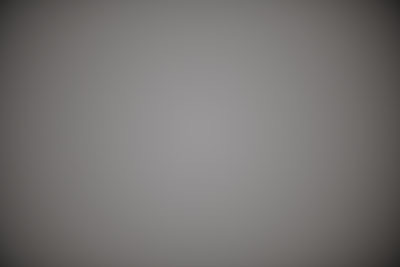
Chromatic aberration: Lateral chromatic aberration (side to side) is negligible wide open, with a tendency to slightly increase in visibility as you stop down, but it's never at levels I really worry about.
More interesting is longitudinal chromatic aberration (near/far, sometimes called axial CA). The 50mm f/1.4G AF-S most certainly exhibits such aberrations, especially near maximum aperture. Objects closer than focus get a magenta cast, objects further than focus get a green cast. This is not unusual for a fast prime, and I suspect Nikon's adding axial chromatic aberration correction to Capture NX2 was due to this lens. Not a terrible flaw, but one to be aware of.
Flare: Not really an issue that I can see. The hood does a good job of keeping light from the front element.
Distortion: modest barrel distortion (<1%). A bit high for a normal prime, but not enough to really worry about.
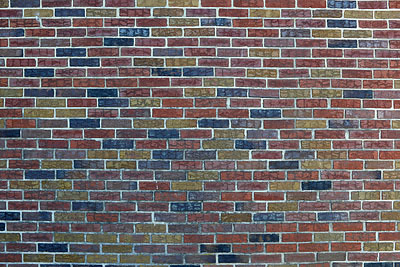
Bokeh: I've got mixed emotions here. In out-of-focus highlights the shape of the aperture is nicely masked due to the rounded 9-blade opening. Moreover, such highlights are nicely circular, exactly what you'd want. But as others have pointed out, as you get closer to maximum apearture you sometimes get a bit of what looks like axial chromatic aberration on the outer edges of the out of focus highlight. Some people call this "edging" or "outlining." On a completely neutral out of focus highlight, having a slight color fringe makes the highlight more obvious and fake looking. Overall, the character of the bokeh is very nice, but that color fringing tends to make it more obvious than you'd want it to be, and adds an artificial-looking color tint to neutral out of focus highlights.
Final Words
The Nikkor 50mm f/1.4D and 50mm f/1.8D are still available. Neither of these earlier lenses have internal focus motors, thus aren't of strong interest to D40, D40x, D60, and D3xxx and D5xxx users. But are they of interest to the rest of the Nikon DSLR community? You'll be a little surprised by my answer, I think. The older 50mm f/1.4D is no longer relevant. While I haven't exactly heaped praise on the optical quality of the new AF-S version, it still is clearly enough better—especially if you're a max or near max aperture shooter—that I think the D version is now completely out of the running.
The f/1.8D version, however, remains a bargain. I think you'll have to think long and hard about what the f/1.4G offers you over the f/1.8D if you've got a DSLR that can use non AF-S lenses. And when you do, you'll decide that it's mostly that f/1.4 that you get for the extra money. By f/5.6, the best aperture for the f/1.4G, both lenses seem pretty much the same to me. In between f/1.8 and f/5.6, the new lens seems to have a bit more sharpness, especially into the corners. So you're trading price for very fast aperture use.
We also have the newer f/1.8G version to consider, and it comes in at half the price of the f/1.4G. As I noted in my f/1.8G review, the f/1.8G holds it own against the f/1.4G in many respects. It really boils down to corners at the fastest lens apertures, where the f/1.4G has an advantage.
Drawbacks
- No snappy focus. For an AF-S lens, this one will seem languid in long focus changes.
- No VR. This is an iffy call, but I think a lens that is going to be used a mild telephoto portrait lens by many probably ought to have had VR, because a lot of those portraits are going to be handheld.
- Longitudinal aberations. Colors aren't focusing to the same plane at maximum aperture, and is difficult to remove.
- Filter size. 58mm is not a size common to Nikon lenses. You'll be buying a step-up ring or new filters if you're a heavy filter user.
Positives
- Optically nice for the size. Especially at maximum aperture, the best of the autofocus 50mm Nikkors, despite the flaws.
- Finally a DX portrait lens. Decent bokeh and better maximum aperture performance make it the choice over the other 50mm Nikkors.
Support this site by purchasing from the following advertiser:
